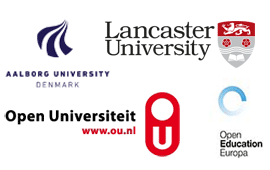

Breaking the boundaries of space and time: A review of applications of bring-your-own-device in higher education
Marcus Sundgren & Jimmy Jaldemark, Department of Education, Mid Sweden University
Throughout history, various technologies have been used to bridge the boundaries of time and space, from 19th-century postcard education to present day mobile technology. Previous reviews examining the first decade of the new millennium showed many research projects using institutionally owned equipment, mostly supporting a teacher-centred approach and with a focus on content delivery. With the rapid development of small, portable and smart devices since 2007, devices becoming ubiquitous in the lives of students of today, has the focus of research changed? This paper reviews journal articles published 2009-2014 with the aim to examine how mobile devices are applied to bridge the boundaries of space and time in higher educational settings, and thereby supporting networked learning for the campus classroom as well as the online student. A search in major databases for English language journal articles was conducted with phrases "mobile learning" and "higher education". We found 109 articles indicating some form of bring-your-own-device (BYOD) philosophy. Categorizations were made primarily based on the abstracts. About 85 per cent of the articles were empirical in nature. Another eight per cent were theoretical and/or argumentative. The remaining articles were reviews, method development or meta-analyses. Subjects of study in the empirical articles were primarily students, but also faculty or a combination of those appears. Geographically, most studies are concentrated in the English-speaking parts of the world, although for instance Sub-Saharan Africa could benefit from development in this area. Not surprisingly, the top three countries by number of publications are USA, UK and Australia. About a third of the articles did not deal with the dimensions of time and space explicitly. Several of the non-empirical articles are among them, and so are a group of empirical articles that examined behavioural intents, perceptions, and attitudes amongst students and faculty. The principal phenomena studied with respect to the bridging of time and space was social media, the most common variety being podcasting, followed by text- and instant-messaging and social networking. Another group addressed how learning management and support systems could be developed to better support flexibility in time and space, or attitudes, intentions and perceptions regarding mobile learning implementations. Results indicate a shift from teacher-centred content delivery approaches towards student-centred communicative approaches. Recent improvements in network infrastructure and device usability seem to afford this development for teachers and students alike. However, a more thorough analysis of the material is required to validate such a claim.
Keywords
BYOD, Higher Education, Mobile Learning, Review
Joint Organising Institutions
| Conference Travel and Accommodation |Doctoral Consortium | Past Conference Proceedings | Contact |